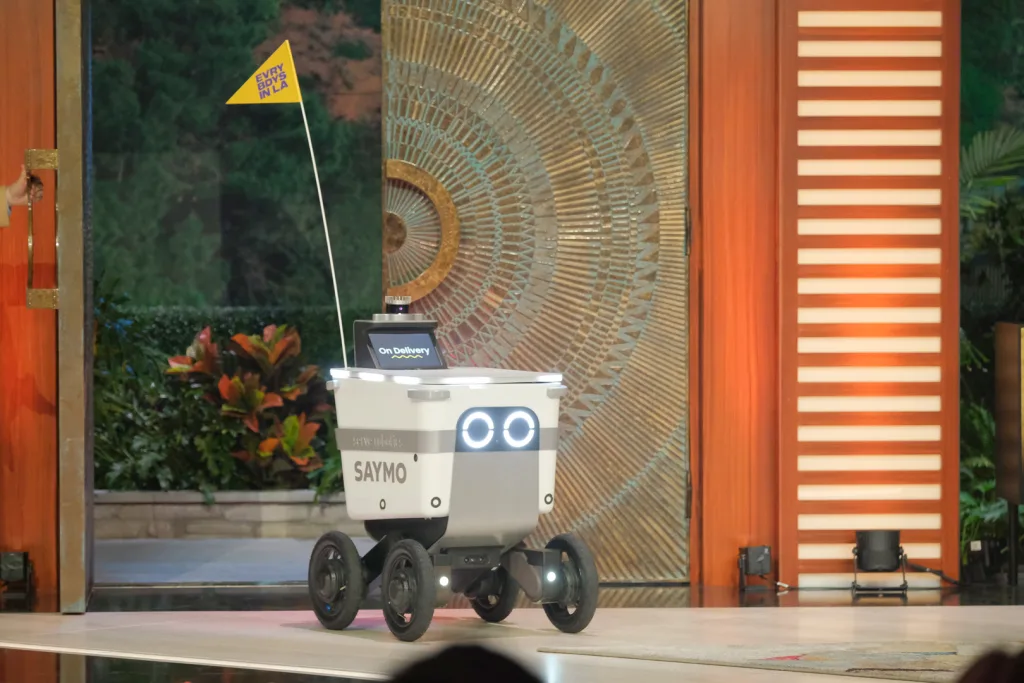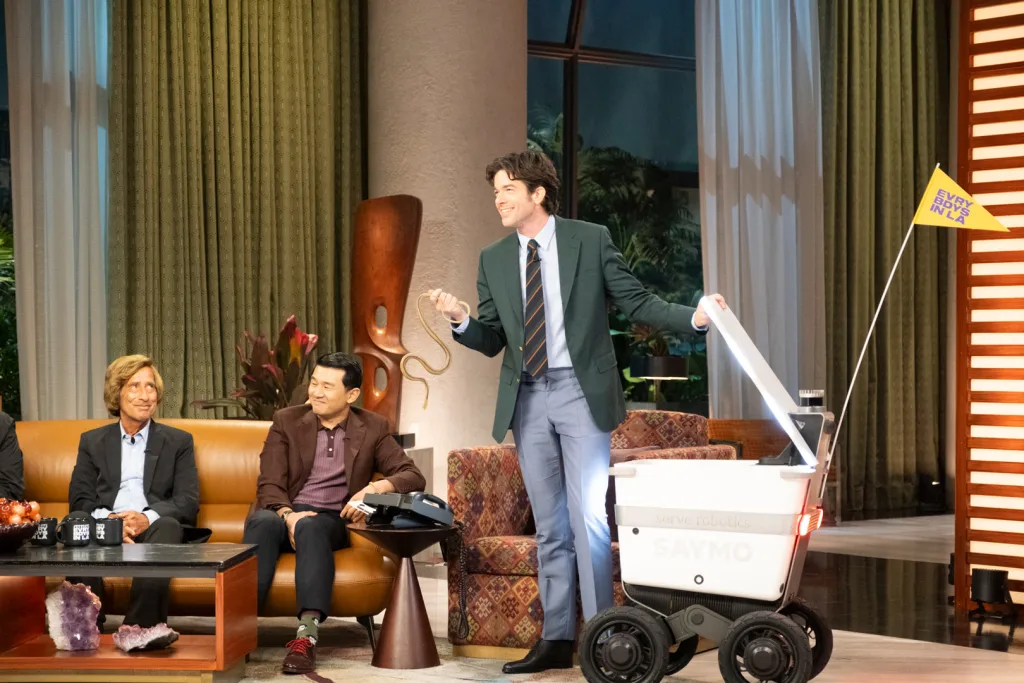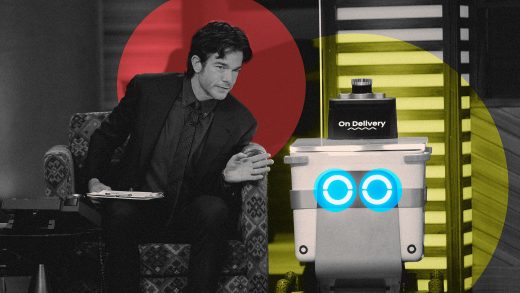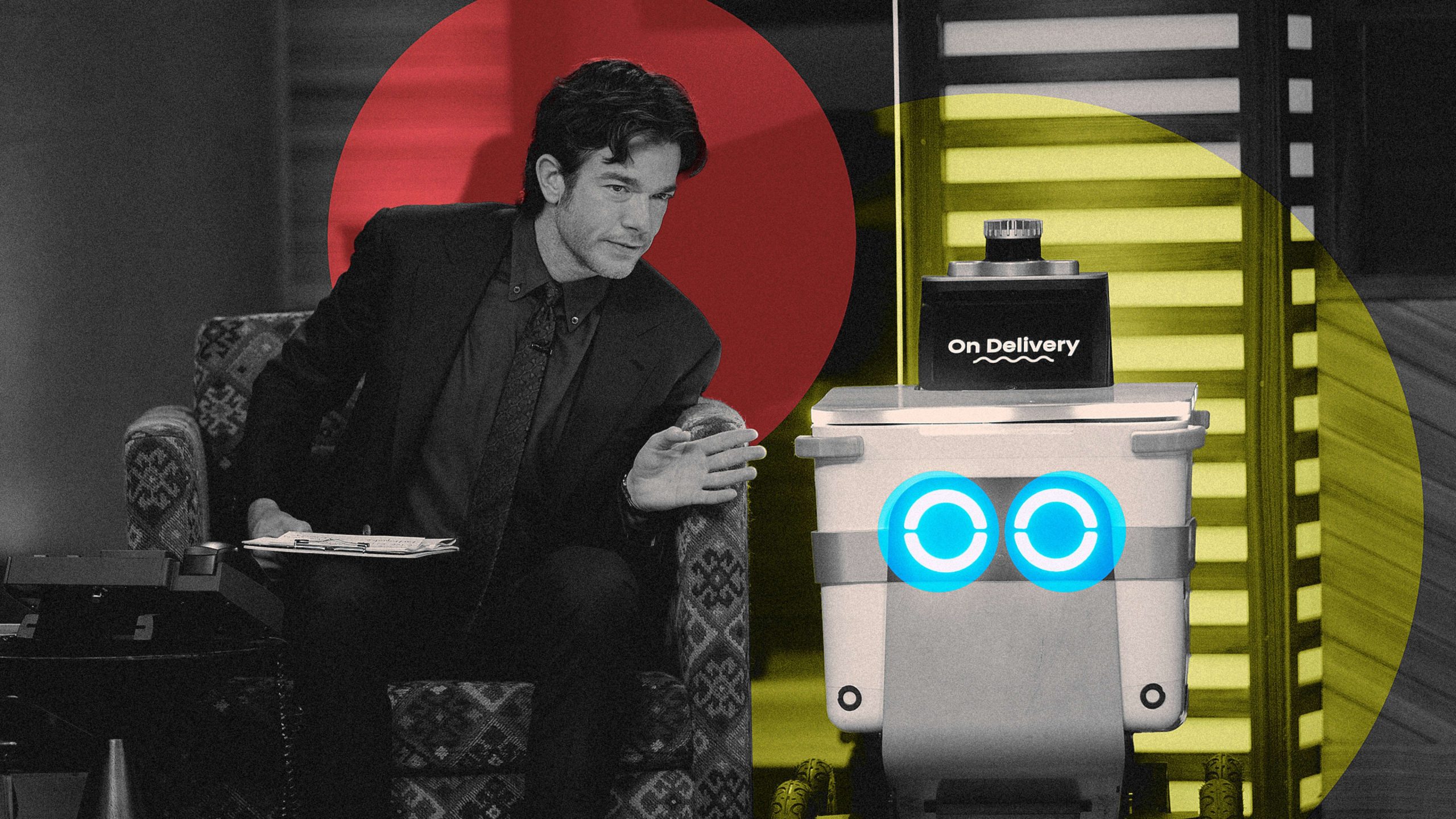How John Mulaney’s robot stole the spotlight on his Netflix talk show
How John Mulaney’s robot stole the spotlight on his Netflix talk show
Even as OpenAI debuted its flashy new chatbot, John Mulaney’s Saymo, a Serve Robotics delivery robot, presented a lovable side of technology.
BY Rob Walker
Branded is a weekly column devoted to the intersection of marketing, business, design, and culture.
John Mulaney’s somewhat-intentionally chaotic pop-up talk show, which ran live for six nights in connection with the Netflix is a Joke Festival, included (and often mocked) many familiar elements of the genre: gaggles of guests, live viewer calls, a bellowing sidekick, comedy set pieces, and person-on-the-street interviews. But amid all this, a stealthy star emerged: Saymo, the delivery robot.
Tech-obsessive viewers may have recognized the boxy bot with big baleful eyes as the flagship creation of Serve Robotics, formerly a division of Postmates that spun off as an independent company in 2021. Working with Uber Eats and other partners, Serve’s autonomous robots, resembling a sleek cooler on wheels, are designed to putter along on sidewalks, delivering food, snacks, sodas, and other items. Fortunately for Mulaney, most of its operations are currently in L.A.

This is how Saymo ended up on John Mulaney Presents: Everybody’s in LA. The theme of the miniseries was the transplanted comedian’s fascination with the city’s mysteries and oddities, and he’s clearly been struck by the presence of Serve’s robots-about-town. The robot wheeled its way on stage in the first episode essentially as a comedy prop, delivering cans of ginger ale; Mulaney asked many of his Angeleno guests if they’d seen the robots around. (Most had.)
As the episodes progressed, Saymo seemed like part of the ensemble. Jon Stewart was openly startled when the bot glided onto the set with no fanfare—and subsequently tried to climb inside the thing. On “sunglasses night,” along with the audience and guests, the robot was seemingly outfitted with a pair; on another episode, it perched stage-side “wearing” a Weezer T-shirt as the band performed. And the show’s finale featured a lengthy and ridiculous Saymo subplot that started with it being accused of flirting with actor-as-announcer Richard Kind’s girlfriend, then banished from the studio, having to wander the streets alone, and bottoming out before heroically redeeming itself.
This was not a paid product placement. “John’s team reached out with the idea to include a robot, and we were excited to take part,” says Aduke Thelwell, Serve’s head of investor relations and communication. “We didn’t drive creative or influence the name or the story arc, but obviously we think John and his team did an incredible job. We followed along live with everyone else.” (The inclusion made perfect sense for an L.A.-centric show, Thelwell adds, given that “delivery robots are a defining feature of the city.”)

The robot was referred to only as Saymo, a name invented by Mulaney’s team and possibly a play on autonomous car brand Waymo—or, less likely, on Jean-Michel Basquiat’s graffiti tag. (Netflix did not respond to a query about the name.) This may have caused confusion among some viewers about whether it was real. But Serve certainly made the most of it, updating its X bio (“Makers of #Saymo”) and promoting its robot’s antics on social media; even its CEO joined in. Thelwell says its robot’s warm reception among Everybody’s in L.A. fans was “heartening”—and notes that Serve robots have had prior pop-culture cameos, showing up on Jimmy Kimmel Live and Gordon Ramsey’s Food Stars, and crossing paths with Chrissy Teigen and Woody Harrelson, among many others.
Still, the Saymo star turn was remarkable. One design and brand challenge of a delivery robot is making it something that both customers and incidental pedestrians crossing paths with it will accept—“even feel empathy toward,” as Fast Company’s Mark Wilson put it when writing about the Serve robot’s early development back in 2019. WALL-E was an influence on the autonomous shopping cart, with eyes that “give the robot a hint of pitiable consciousness” in hopes of making it less kickable (people have been known to attack the delivery bots as well as autonomous machines like Waymo cars). That’s a pretty good description of how Saymo played.
It’s interesting to contrast this with the big tech news of the week: the debut of a new version of ChatGPT that’s been widely compared to the AI in the movie, Her. Sam Altman apparently agrees, and maybe we’re on our way to being smitten with our emotionally complex robotic companions. But Her did not exactly have a happy ending, and there’s something a lot less unsettling about a clunky, vaguely cute machine designed to transport snacks. In Mulaney’s orbit, it seemed absurd and funny. After a week of watching Saymo, who wouldn’t welcome this new robot underling?
ABOUT THE AUTHOR
(22)



